I don’t think that most GMs sit at the right spot at the table. As a GM I’m always trying to think of ways to keep my players more engaged in our games. Besides storytelling and funny voices, I like to also use physical things: props, minis, maps, terrain, heck even a custom built game room decorated as a tavern. And like many GMs that have been to Gen Con, I’ve seen those amazing game tables that different companies make these days.
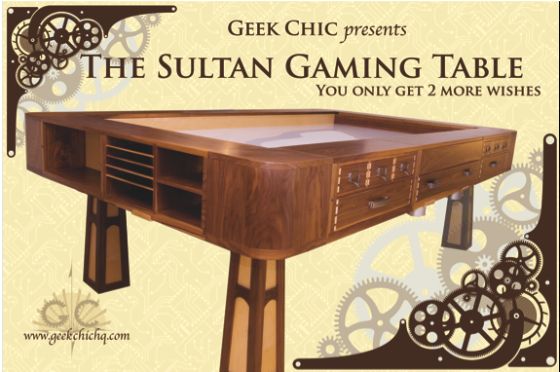
Professionally made game tables such as the Sultan from the now bankrupt Geek Chic traditionally put the game master station at the long end of the table.
An Easy Solution
But one thing I’ve noticed: They always put the ‘GM’ station on these things at one of the long ends of the table. The ‘head’ of the table, so to speak. But I always found that sitting at the far end of the table separates me from my players. They have to turn their heads sideways to look at me, and their natural focus becomes the battle-map in front of them. It also makes it easier for players at the far end of the table to feel less engaged and become distracted by their phones.
And speaking of the battle map, drawing on it or moving minis is also harder. I’m often left asking one of my players to do that for me, which breaks some of the immersion of the game. So I thought about it… and think its best to GM from the side of the table. From the center of one of the long sides, the rest of the players spaced around the table’s other edges, now the focus of their view is the Game Master. The battle map is still there, and the GM will have a lot better reach.
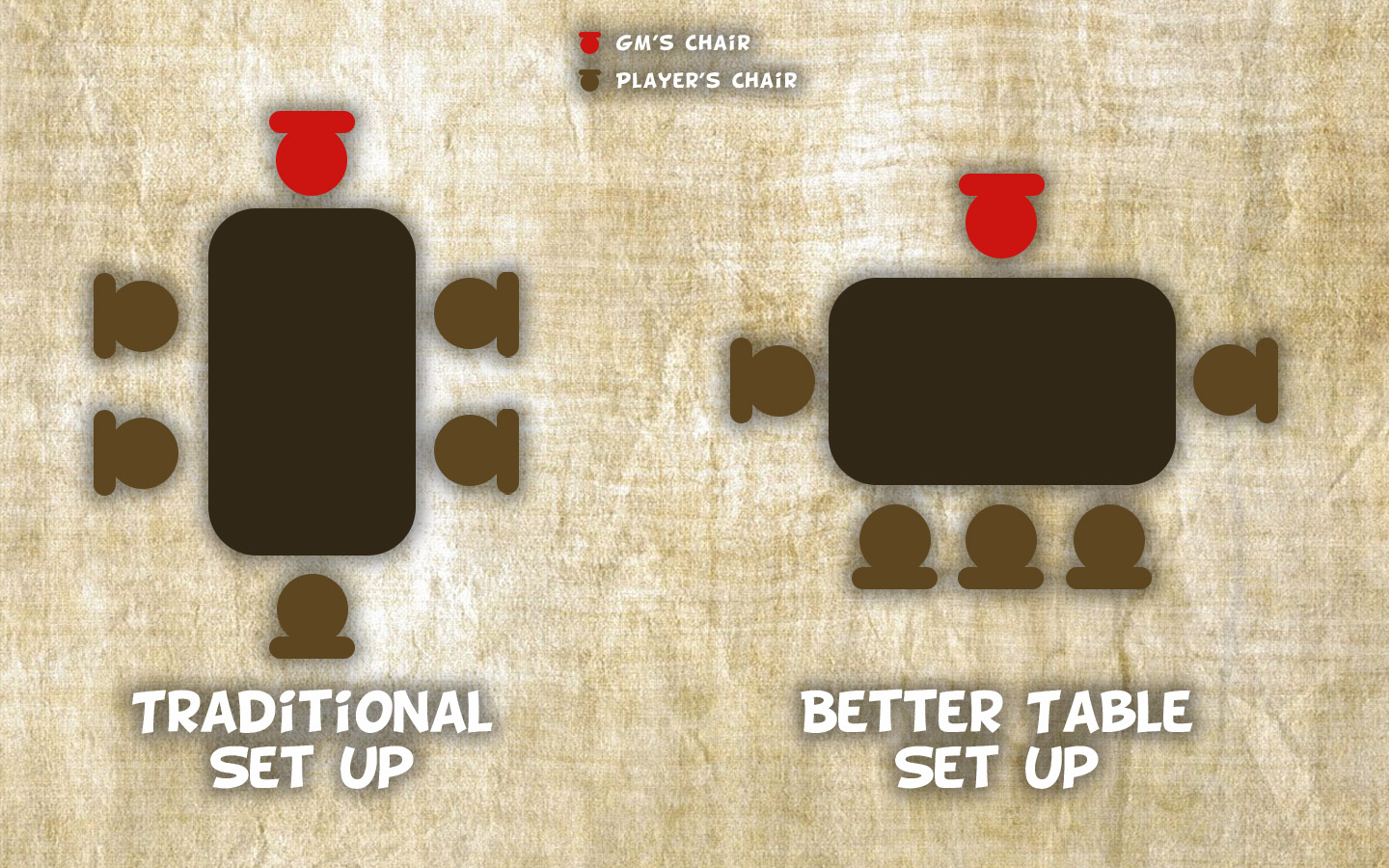
Without replacing the table, just a simple seat rotation changes everything.
This does give the GM more space than any of the other people at the table, but with their piles of books, minis, and such, usually the GM needs more space than anyone else. Besides, I’ve long made use of the Chessex Battle-Top to make sure we /all/ have plenty of space at the table, and a riser of any type that allows players to keep books and notes under the battle map will make sure things don’t get too crowded.
I’ve done a few test runs of running the game like this and I have to say, a great improvement for me. As long as you have five or less players. As more players show up, it becomes more likely to make more ‘efficient’ use of the table. But I don’t like running more than five people anyway. Even PFS games seem a bit crowded for my tastes.
Asking around, I’ve since learned this isn’t a completely unique revelation with many of my friends and industry contacts chiming in to say they’ve done this as well.
The Right Tools for the Job
So I started to wonder what a custom table designed to handle this style of play might look like. I’ve seen a few examples online, and sketched up this simple design that I think will be easy to make. Take a 3.5′ x 5′ and snip the corners off one side to give everyone some extra elbow room.
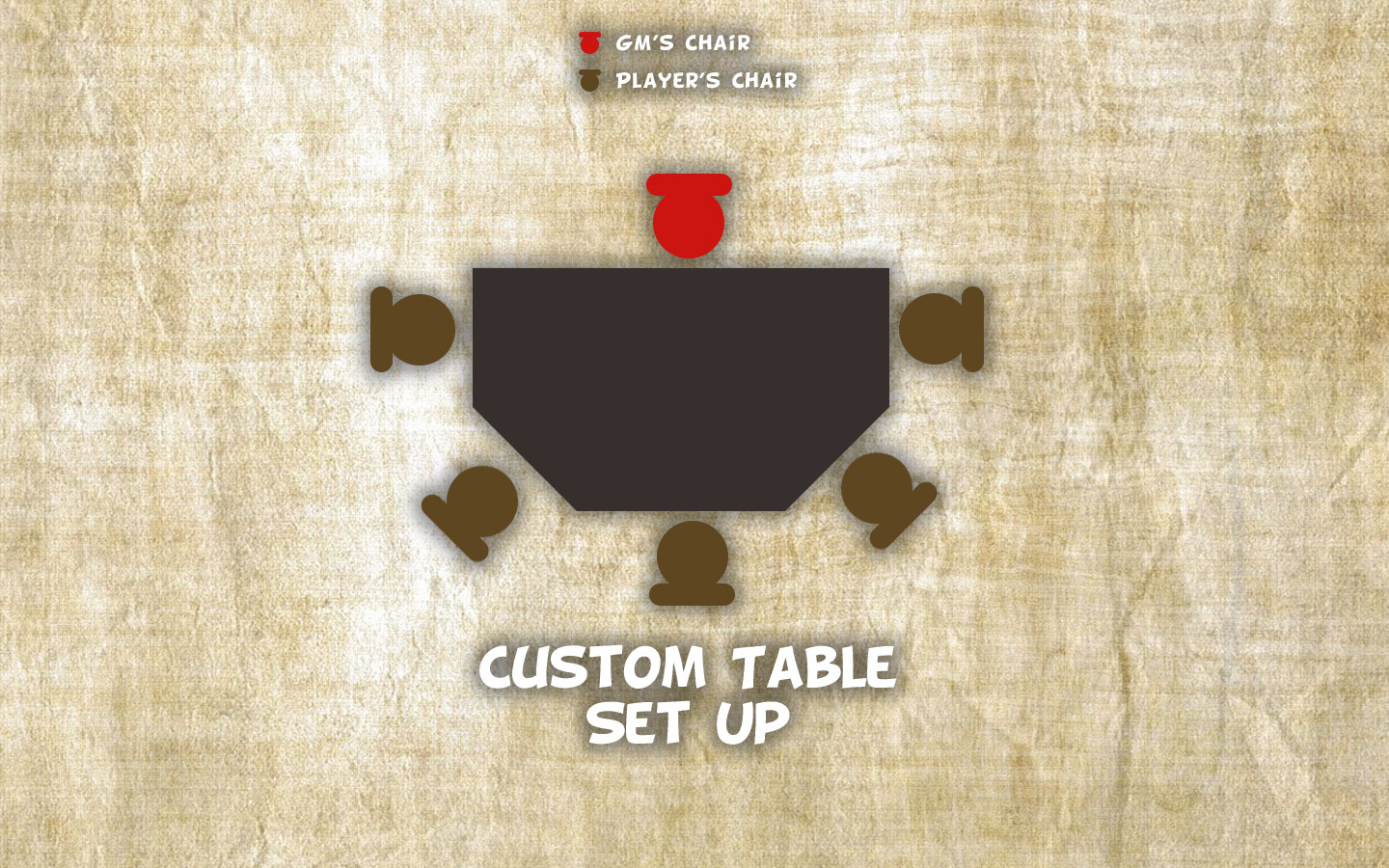
A simple shape to make, this puts all the attention on the GM while giving players enough room to breath.
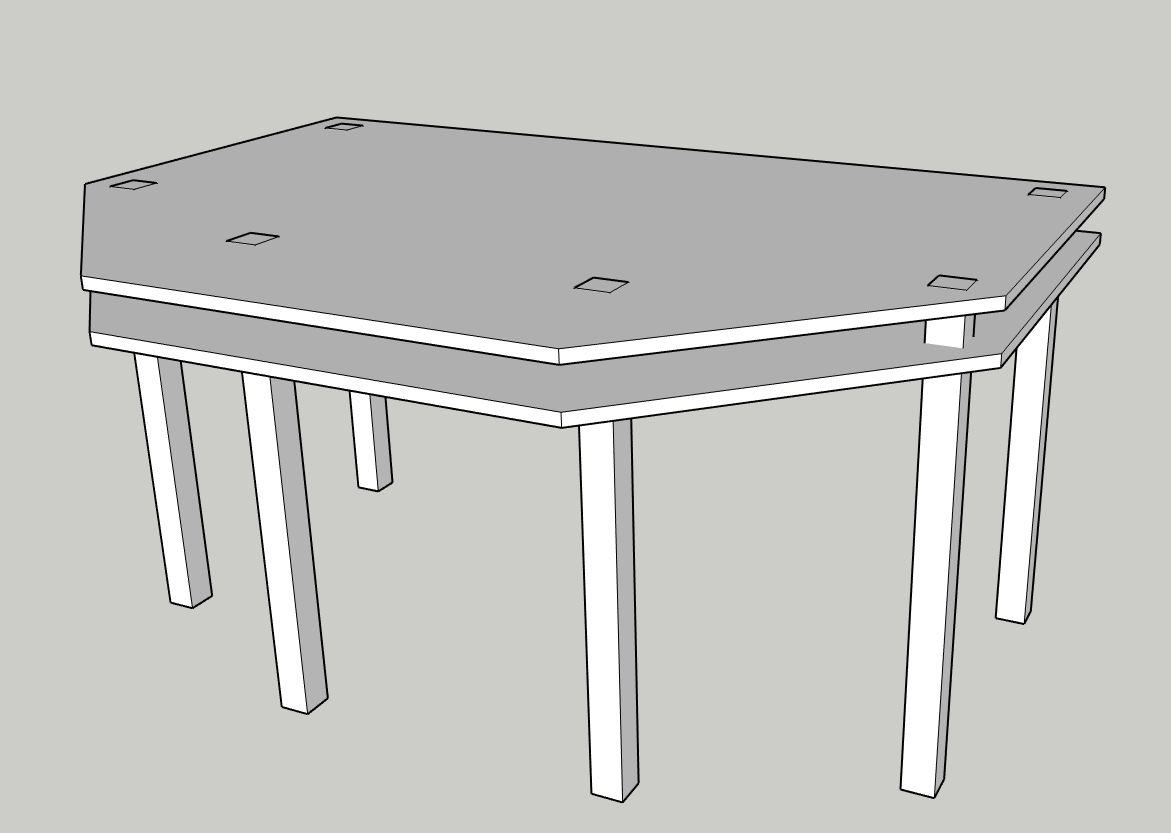
A quick trip to Sketch Up to visualize the design, and integrating a full size shelf to store books and sheets when not in use.
Only disadvantage here is what to do when more than the five people show up. Some of them have to start sharing edges. A ’round edge’ design eliminates that problem but is harder to cut. My education friends were quick to point out that these are called ‘kidney tables’ and can be purchased online. Though they’re usually plastic and designed for public settings, not medieval taverns.
Other People’s Tables
Of course, again, I’m not the only one. And as I’ve talked about this many of my friends took to Pinterest and found other tables inspired by the same thoughts:
And of course there is Matt Mercer’s table from Critical Role, though its designed for optimal streaming instead, but with the same benefits:
Lessons Learned
Maybe the end of the table works best for your group after all, or maybe a shift in seating will help make your games more engaging. In the end, this is something that plays to each game master’s style and environment. But I think it is important to give it a thought beyond what the ‘normal’ is. Its easy to spend thousands of dollars in this hobby looking for ways to make your game better, so what harm is a shift in literal perspective?
Also, as others have pointed out to me, with a circular table, or a square table, or octagonal table… none of this is an issue. All sides are equal. When I play at Gen Con I notice how much more I enjoy that set up. I even intended to buy a round table for my game room when I built it until I found the banquet table I have for $100 from a closing hotel. Maybe I’ll be looking to find that banquet table a new home soon.


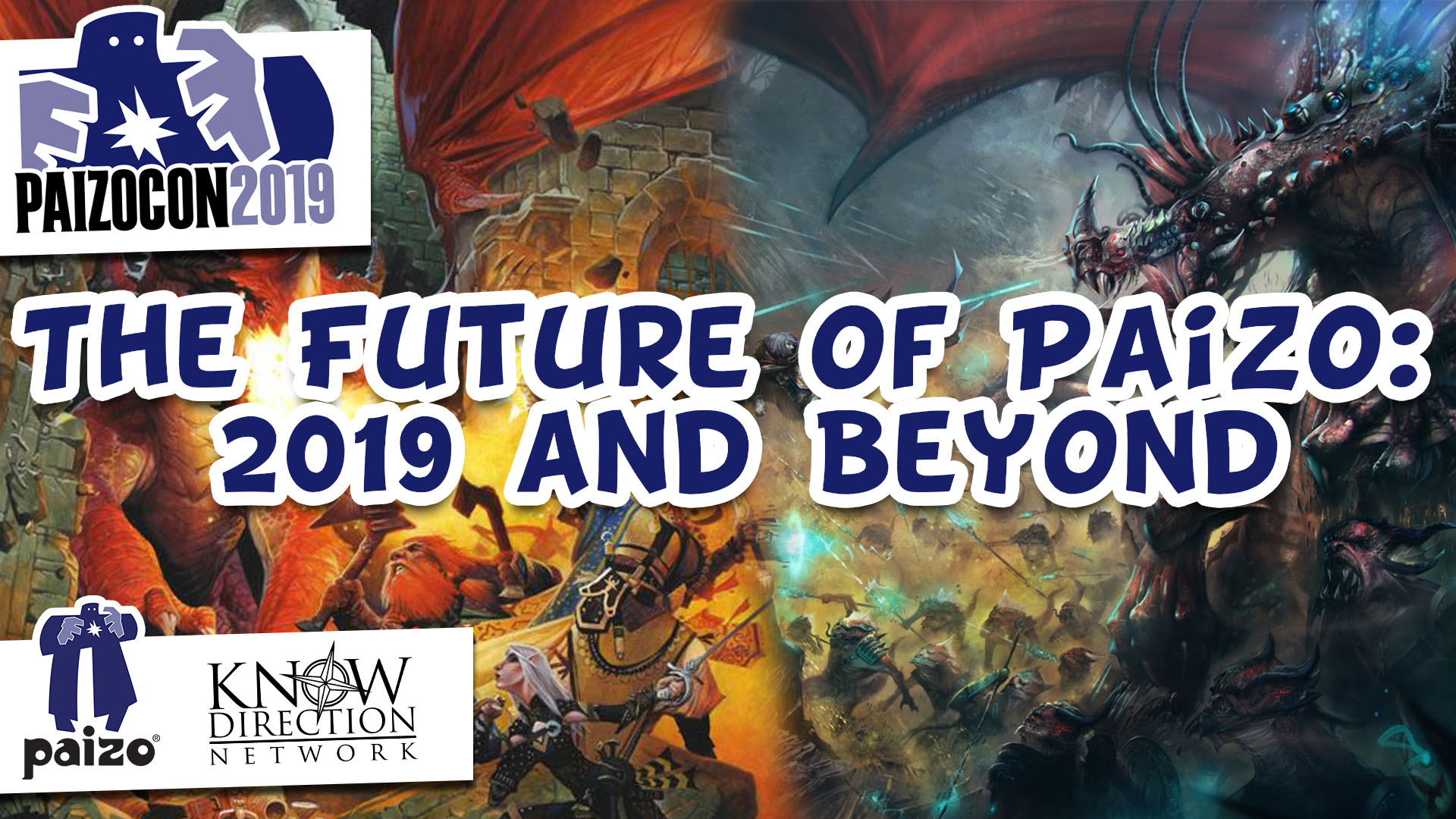
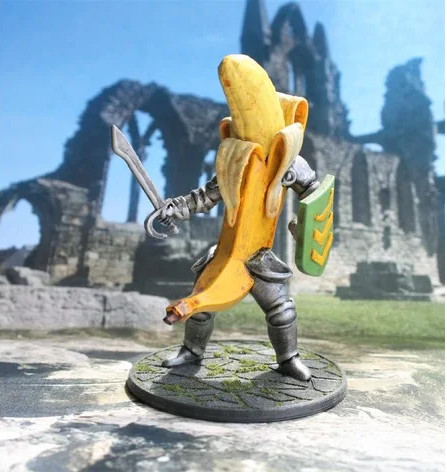



I did something similar with mine and it was certainly the way to go https://i.imgur.com/hrUUKJz.jpg